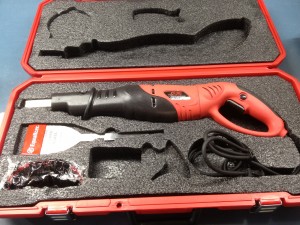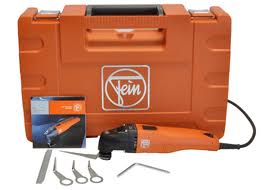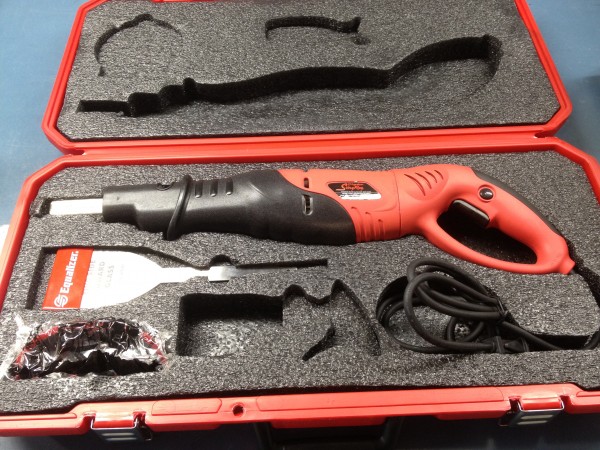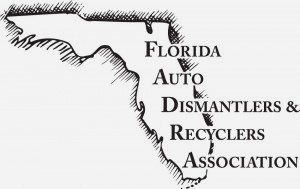There are lots of ways to remove auto glass from vehicles. The technique will depend on which parts of the assembly are to be salvaged. Other considerations are the health and safety of the technicians, cost, and the speed with which it can be done.
There are a variety of tools employed for removing auto glass, from the basic “piano wire” to cold knives to very specialized powered systems. Regardless of the method used, certain principles are universal:
1. Keep your blades sharp.
2. Lubricate the cutting area with water or urethane-friendly spray.
Powered systems
Any shop that deals with auto glass on a regular basis should consider investing in a powered system. As newer models of vehicles find their way into the pipeline, newer methods of setting auto glass will be encountered. Glass removal strategies have to be increasingly flexible to accommodate these innovations.
One cut that powered systems are especially useful for is plunge cutting windshields below the dashboard. There tends to be a lot of urethane to cut through down there, and many windshields extend well below the dashboard. Another feature to look for in a powered system is the degree to which you can regulate the depth of your cut. Some systems offer precise control so your blade will reach only as far as necessary to cut the sealant and will never strike and scar the metal just beyond.
There are three basic styles of powered systems on the market today: the modified reciprocating saw, the oscillating tool, and the BTB system.
Modified reciprocating saw: Equalizer Products

Equalizer”s products are offered in a molded attaché case worthy of an international man of mystery, complete with safety glasses. Note the reserved space for a water bottle (not included).
This system is a corded 115v tool inspired by reciprocating saw technology and custom engineered for glass removal. The gear ratio is modified for optimum control and uses interchangeable styles of blades that resemble putty knives of varying widths and lengths. This tool excels in plunge cutting wide bands of urethane below the dashboard of most windshields. and can also be used to cut between glass and pillars and roof from the inside of the car.
This tool is not intended to be used in every removal operation, but it is highly effective in making the cuts that it was designed to make.
This tool is very well suited for on-location work since it can be plugged in virtually anywhere. For ultimate portability, a battery powered model is also available.
Oscillating Tool: Fein SuperCut

Fein Supercut has many attachments and many imitators
This tool uses a oscillating vibration to cut material and has hundreds of blade attachments for cutting wood and masonry. It has many applications in home remodeling, but with the proper attachments, it makes a very useful auto glass tool as well. It is available in corded electric, battery powered, and air powered versions and has many imitators. A great many blades are available in a variety of configurations for making cuts from both inside and out of the vehicle.
BTB Air Tool
Perhaps the most refined of auto glass removal systems is the BTB system, imported from Australia. The heart of the system is the air tool itself which can be affixed with dozens of blades and attachments that can speedily cut out auto glass, glued-on panels and trim pieces with precision and ease. The non-scuffing nylon head of the tool is designed to rest flat against the glass to position the blade optimally for cutting.
The tool has a reciprocating action with a very short stroke and is very comfortable to operate for extended periods. The movement of the saw works well with saw attachments of several configurations, including long serrated blades for plunge cutting and “cold knife-” style blades for quickly getting around windshields from outside the vehicle. The breadth of saw shapes and configurations allows a well-equipped technician to work faster, more confidently with less frequent damage to glass, paint and trim, many times alleviating the need to remove trim pieces that would need to be removed if using other methods.
Encapsulated glass is often considered quite challenging to remove; with the tool’s arsenal of specialty blades, even the most inaccessible adhesive can be reached with surgical precision.
The resharpen able blades are color coded according to their blade profile. They are ground in such a way that they will float either toward the glass or towards the pinch weld depending on the color you choose and whether you make your cut from the inside or the outside of the vehicle. Usually you will want to hug the glass and leave the urethane attached to the metal, but not always. Using the color coding system, the blade will find its path without leverage or forcing once you get the feel for the tool.
Another innovation of this tool is the blade depth control arm accessory. With these guides, you can set the precise maximum depth of cut so your blade will cut only to the depth of the glass and not be scarring the finish of the metal just beyond.
Since it is a pneumatic tool, it isn’t quite as portable as other systems. They have recently introduced and electric battery powered model for those who need portability.
All of these tools will take some time to get accustomed to. Glass is very unforgiving, and acquiring a “feel” for the correct way to use a knife may take a little experience. Ask your dealer if they have any training resources when you buy.





